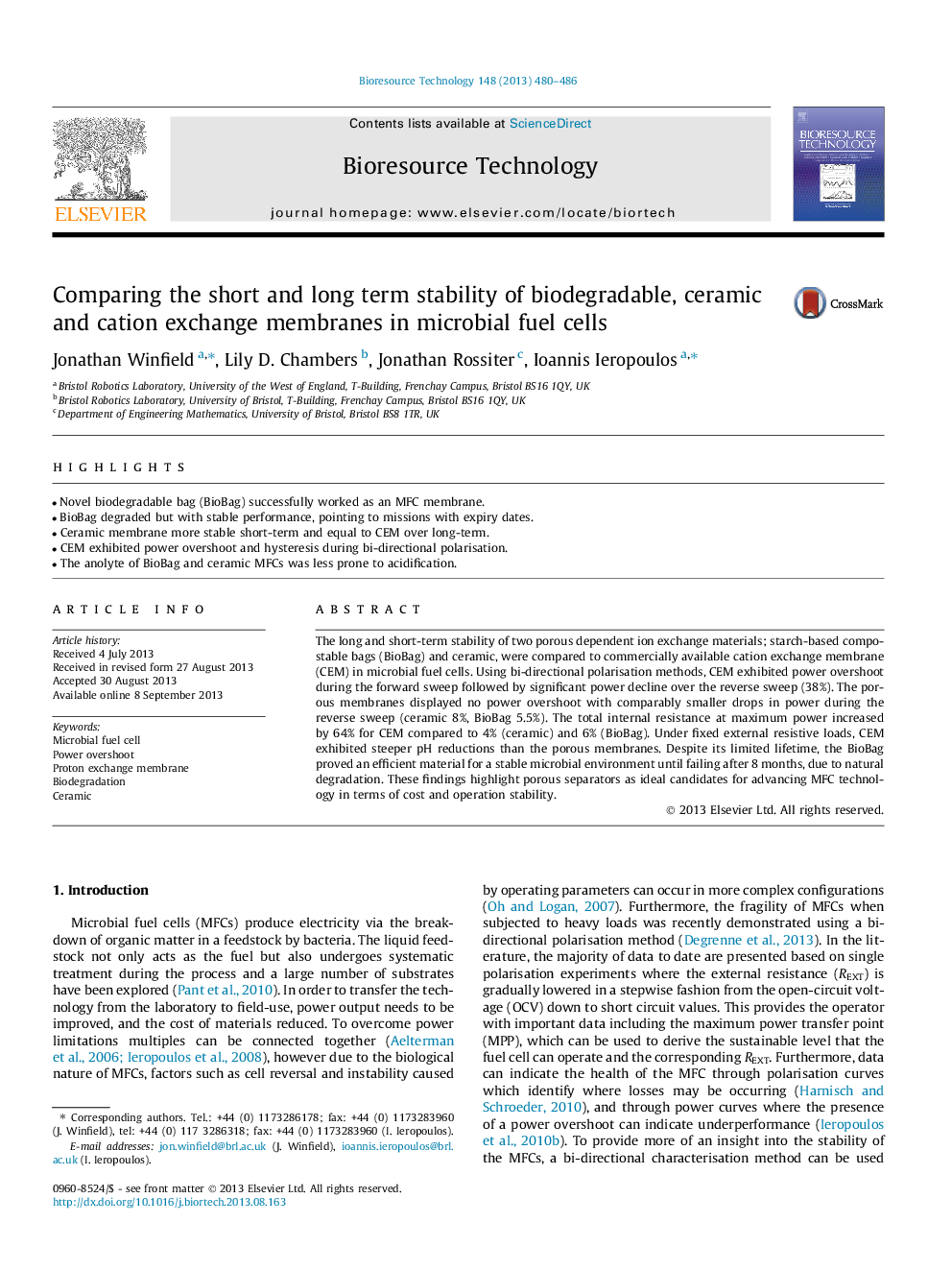| Article ID | Journal | Published Year | Pages | File Type |
|---|---|---|---|---|
| 7080059 | Bioresource Technology | 2013 | 7 Pages |
Abstract
The long and short-term stability of two porous dependent ion exchange materials; starch-based compostable bags (BioBag) and ceramic, were compared to commercially available cation exchange membrane (CEM) in microbial fuel cells. Using bi-directional polarisation methods, CEM exhibited power overshoot during the forward sweep followed by significant power decline over the reverse sweep (38%). The porous membranes displayed no power overshoot with comparably smaller drops in power during the reverse sweep (ceramic 8%, BioBag 5.5%). The total internal resistance at maximum power increased by 64% for CEM compared to 4% (ceramic) and 6% (BioBag). Under fixed external resistive loads, CEM exhibited steeper pH reductions than the porous membranes. Despite its limited lifetime, the BioBag proved an efficient material for a stable microbial environment until failing after 8 months, due to natural degradation. These findings highlight porous separators as ideal candidates for advancing MFC technology in terms of cost and operation stability.
Related Topics
Physical Sciences and Engineering
Chemical Engineering
Process Chemistry and Technology
Authors
Jonathan Winfield, Lily D. Chambers, Jonathan Rossiter, Ioannis Ieropoulos,
